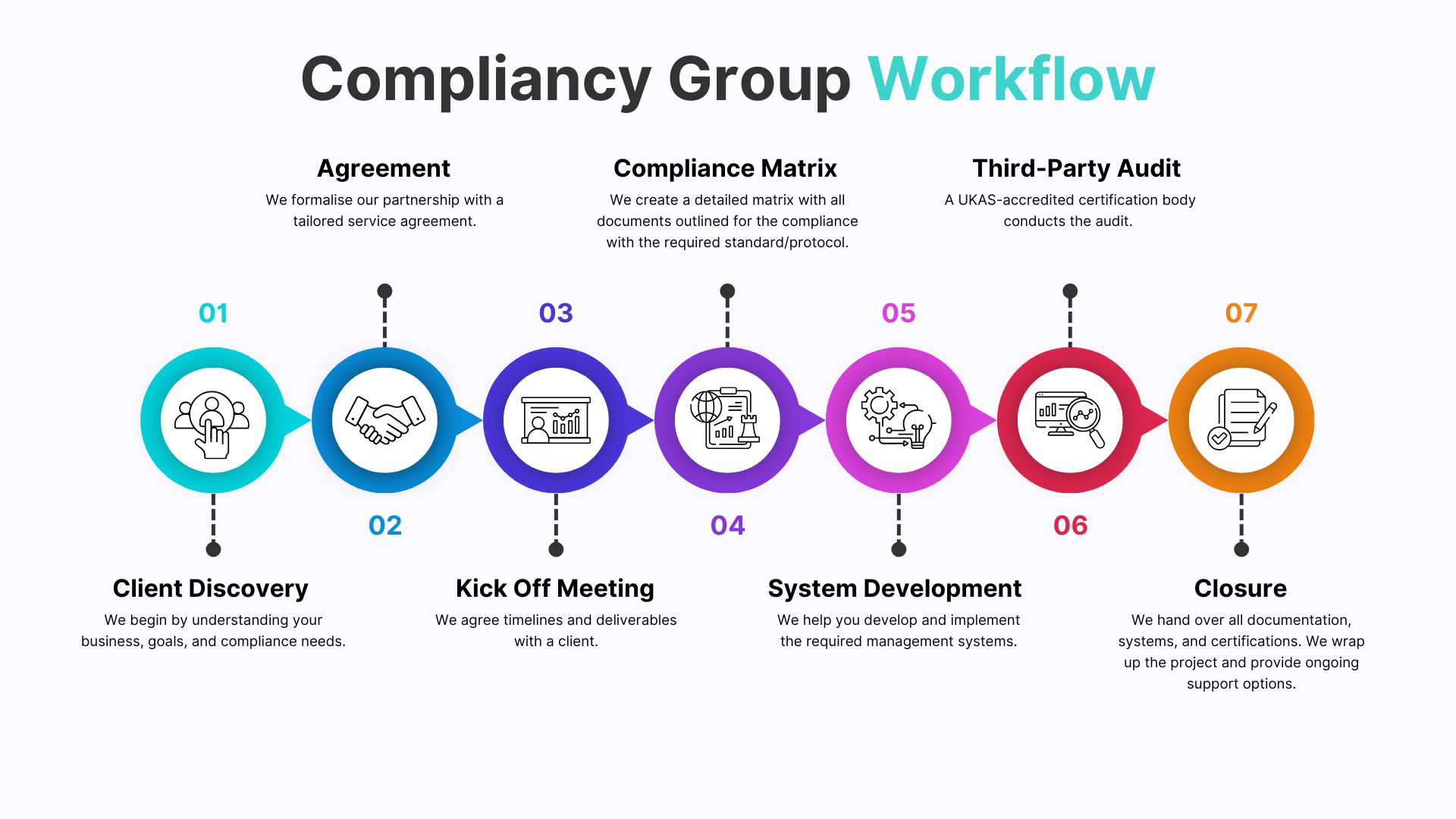We're Here To
Help
An Emergency Lighting Test is a crucial inspection designed to ensure that your emergency lighting systems are fully operational and compliant with safety regulations. Regular testing demonstrates your business’s commitment to occupant safety, legal compliance, and risk management – trusted by clients, partners, and regulators across all sectors. With effective emergency lighting, you protect people during power outages or emergencies and strengthen your reputation for safety. Compliancy Group guides you through every step – making emergency lighting compliance clear, practical, and a genuine business advantage.
We understand the importance of reliable emergency lighting and current safety regulations. Our team brings hands-on experience with testing, maintenance, and industry best practices.
No one-size-fits-all here. Whether you need routine testing, maintenance planning, compliance advice, or documentation support, our services are fully customised to your needs. We offer flexible support packages—from essential guidance to comprehensive on-site consultancy.
We work exclusively with UKAS-accredited certification bodies and maintain a 100% pass rate for compliance assessments. Our clients trust us to deliver results that stand up to audit and regulatory scrutiny—helping you achieve, maintain, and leverage emergency lighting compliance for business growth.
Compliance shouldn’t slow you down. We help you build safer environments, reduce risk, and improve operational efficiency—so you can focus on your core business.
You’ll work directly with our expert team, including leadership involvement from our CEO. We pride ourselves on responsive communication, clear guidance, and ongoing support throughout your compliance journey.
Demonstrate compliance to secure contracts and reassure clients or insurers.
Show your commitment to safety and legal responsibilities.
Minimise the risk of accidents during power failures or emergencies.
Enhance your standing as a responsible and trusted organisation.
Regular tests and compliance checks foster a culture of ongoing safety and operational excellence.
Strengthen Reputation
From initial testing to ongoing support, our team ensures you’re always prepared and confident.
We streamline compliance processes, freeing up your team to focus on core business activities.
Services are tailored to your specific business needs, not generic templates.
Ongoing support, training, and regulatory updates keep your business compliant long after inspection.
Our 100% compliance pass rate and exclusive partnerships with UKAS-accredited bodies mean you’re in safe hands.

In the UK, emergency lighting systems require monthly functional testing and an annual full discharge test to ensure they are in working order. The monthly test involves a short check to ensure the lights activate and illuminate, while the annual test simulates a mains power cut to verify the battery's capacity to last for the required duration (usually 1 or 3 hours). These tests are crucial for compliance with fire safety regulations and maintaining a safe environment
Getting an Emergency Lighting Certificate provides assurance and ensures compliance with legal standards. This certificate confirms the effectiveness of your emergency lighting system, enhancing safety for all residential and commercial properties.
The British Standard for emergency lighting is BS 5266, specifically BS 5266-1. It's a code of practice that provides guidance on the design, installation, and maintenance of electrical emergency lighting systems in buildings. BS 5266 ensures that emergency lighting systems are properly installed and functional during power failures or other emergencies, enabling safe evacuation
once every month The only way to ensure your signs are working properly 24/7 is to perform the necessary tests and maintenance, which is why the NPFA requires these checks. According to the NFPA, at minimum, your exit signs must be tested once every month by depressing the test button for 30 seconds.
Emergency light testing is typically conducted by a qualified electrician. The frequency of testing depends on the type of emergency light, but most lights should be tested at least every year. Regular maintenance and replacement of batteries and bulbs is also necessary to keep emergency lights in working order.
every 6 months AS 2293.2:2019 appendix A (A1 & A2) Specifies that emergency and exit lighting inspection and maintenance must be carried out every 6 months with a tolerance of = or - 1 month. Emergency Exit Signs are installed to guide personnel and fire brigade out of a building.
During the inspection, a trained individual must test the lamps and replace any defective lights. Each device will also undergo a discharge test in which a technician will turn the battery charger off and simulate a power outage for a duration of 90 minutes.
In the UK, an electrical compliance certificate, also known as an Electrical Installation Condition Report (EICR), is a document that verifies the safety of a property's electrical installations. It's issued by a qualified electrician after a thorough inspection and testing of the electrical system. This certificate is crucial for landlords, homeowners, and businesses to ensure electrical safety and compliance with regulations
ISO 30061:2007 specifies the luminous requirements for emergency lighting systems installed in premises or locations where such systems are required.